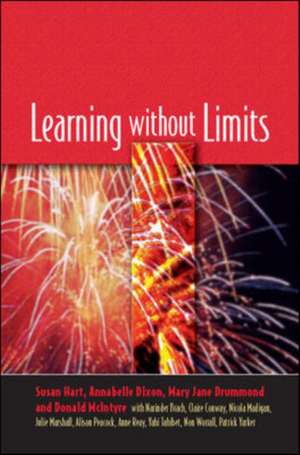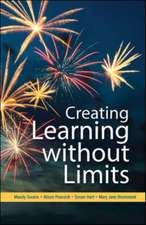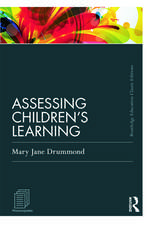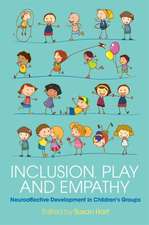Learning without Limits
Autor Susan Hart, Annabelle Dixon, Mary Jane Drummond, Donald McIntyreen Limba Engleză Paperback – 16 mar 2004
- Why do some teachers insist on teaching without recourse to judgements about ability?
- What are the key principles on which they draw as they organize and provide for learning?
- What is the significance of their alternative approach for classrooms in the 21st century?
This book will inspire teachers, student teachers, lecturers and policy makers, as well as everyone who has a stake in how contemporary education and practice affect children's future lives and life chances.
Preț: 262.42 lei
Nou
Puncte Express: 394
Preț estimativ în valută:
50.22€ • 53.70$ • 41.87£
50.22€ • 53.70$ • 41.87£
Carte tipărită la comandă
Livrare economică 17 aprilie-01 mai
Preluare comenzi: 021 569.72.76
Specificații
ISBN-13: 9780335212590
ISBN-10: 033521259X
Pagini: 296
Ilustrații: index
Dimensiuni: 152 x 229 x 15 mm
Greutate: 0.4 kg
Editura: McGraw Hill Education
Colecția Open University Press
Locul publicării:United Kingdom
ISBN-10: 033521259X
Pagini: 296
Ilustrații: index
Dimensiuni: 152 x 229 x 15 mm
Greutate: 0.4 kg
Editura: McGraw Hill Education
Colecția Open University Press
Locul publicării:United Kingdom
Cuprins
Foreword by Clyde Chitty
Acknowledgements
Part one: Beyond ability-based teaching and learning
Chapter 1: Ability, educability and the current improvement agenda
Chapter 2: What's wrong with ability labelling?
Chapter 3: The Learning Without Limits project: methods and approaches.
Part two: Accounts of the teachers' practices
Introduction
Chapter 4: Anne's approach: 'They all have their different ways to go'.
Chapter 5: Claire's approach: 'a thinking classroom'.
Chapter 6: Alison's approach: 'an open invitation.'
Chapter 7: Narinder's approach: 'the promise of tomorrow.'
Chapter 8: Patrick's approach: 'only connect.'
Chapter 9: Nicky's approach: 'Step back and look at the children.'
Chapter 10: Yahi's approach: 'raising the level of trust.'
Chapter 11: Julie's approach: 'access, security, success.'
Chapter 12: Non's approach: 'the bridge between values and practice.'
Part three: the core idea of transformability.
Chapter 13: Transforming the capacity to learn.
Chapter 14: Purposes and principles in practice.
Chapter 15: Young people's perspectives on learning without limits.
Chapter 16: Framing learning without limits teaching: contexts and retrospectives.
Chapter 17: Towards an alternative improvement agenda.
Bibliography.
Part one: Beyond ability-based teaching and learning
Chapter 1: Ability, educability and the current improvement agenda
Chapter 2: What's wrong with ability labelling?
Chapter 3: The Learning Without Limits project: methods and approaches.
Part two: Accounts of the teachers' practices
Introduction
Chapter 4: Anne's approach: 'They all have their different ways to go'.
Chapter 5: Claire's approach: 'a thinking classroom'.
Chapter 6: Alison's approach: 'an open invitation.'
Chapter 7: Narinder's approach: 'the promise of tomorrow.'
Chapter 8: Patrick's approach: 'only connect.'
Chapter 9: Nicky's approach: 'Step back and look at the children.'
Chapter 10: Yahi's approach: 'raising the level of trust.'
Chapter 11: Julie's approach: 'access, security, success.'
Chapter 12: Non's approach: 'the bridge between values and practice.'
Part three: the core idea of transformability.
Chapter 13: Transforming the capacity to learn.
Chapter 14: Purposes and principles in practice.
Chapter 15: Young people's perspectives on learning without limits.
Chapter 16: Framing learning without limits teaching: contexts and retrospectives.
Chapter 17: Towards an alternative improvement agenda.
Bibliography.



